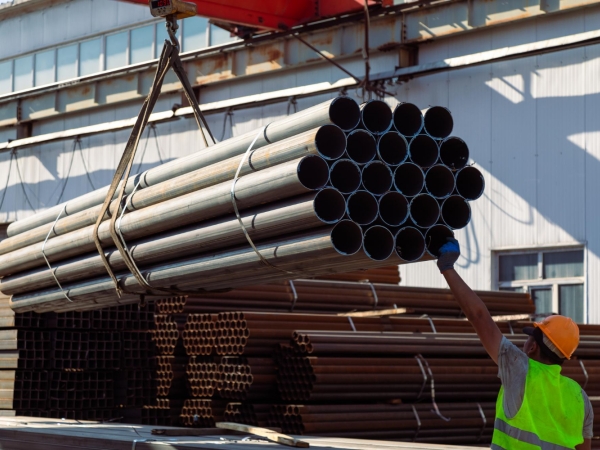Los tubos de acero estructural se utilizan comúnmente en diversas aplicaciones de construcción e ingeniería debido a su resistencia, durabilidad y versatilidad. Los hay de varios tipos y tienen una amplia gama de aplicaciones. A continuación se muestran algunos tipos y aplicaciones comunes de tubos de acero estructurales.

- Tubería de acero al carbono:
Los tubos de acero al carbono se utilizan ampliamente en aplicaciones estructurales, como estructuras de edificios, puentes, estadios y estructuras industriales. También se utilizan en la construcción de tuberías para el transporte de fluidos y gases.
- Tubo de acero galvanizado:
Los tubos de acero galvanizado están recubiertos con una capa de zinc para protegerlos de la corrosión. Se utilizan comúnmente en aplicaciones expuestas y al aire libre, incluidas cercas, pasamanos y sistemas de distribución de agua.
- Tubería de acero inoxidable:
Las tuberías de acero inoxidable son conocidas por su resistencia a la corrosión y su solidez. A menudo se utilizan en aplicaciones arquitectónicas y decorativas, así como en industrias como la de procesamiento químico, la de alimentos y la farmacéutica.
- Tubería de acero aleado:
Alloy steel pipes are used in applications that require high strength and resistance to specific conditions, such as high temperatures or corrosive environments. Common applications include oil and gas pipelines, power plants, and aerospace components.
- Hollow Structural Sections (HSS):
HSS are steel pipes with a square, rectangular, or circular cross-section. They are commonly used in the construction of buildings, bridges, and other structures as columns, beams, and braces due to their high strength-to-weight ratio.
- Pipe Piles:
Pipe piles are used in the construction of deep foundations for buildings, bridges, and waterfront structures. They are driven into the ground to support heavy loads and provide stability.
- Piling Pipes:
Piling pipes are used for creating foundations in marine and coastal construction projects, such as docks, piers, and seawalls. They are designed to withstand the harsh conditions of underwater environments.
- Casing and Tubing:
Casing and tubing pipes are used in the oil and gas industry for drilling and well completion. They provide structural support and protection for the wellbore.
- Conduit Pipes:
Conduit pipes are used to protect and route electrical wiring and cables in buildings and industrial settings. They ensure the safety and organization of electrical systems.
- Structural Fabrication:
Structural steel pipes are often used in custom fabrication to create various components in construction, such as trusses, support columns, and building frames.
- Transportation Infrastructure:
Steel pipes are used in the construction of transportation infrastructure, including highway guardrails, signposts, and pedestrian walkways.
- Agricultural Equipment:
Steel pipes are used in the fabrication of agricultural equipment like irrigation systems, grain storage, and fencing.
- Mining and Material Handling:
Steel pipes are used in the mining industry for transporting materials and in material handling equipment like conveyor systems.
The choice of the specific type of structural steel pipe depends on the application's requirements, including factors such as load-bearing capacity, corrosion resistance, and environmental conditions. Engineers and designers select the appropriate type of steel pipe based on these factors to ensure the safety and longevity of the structure or system.